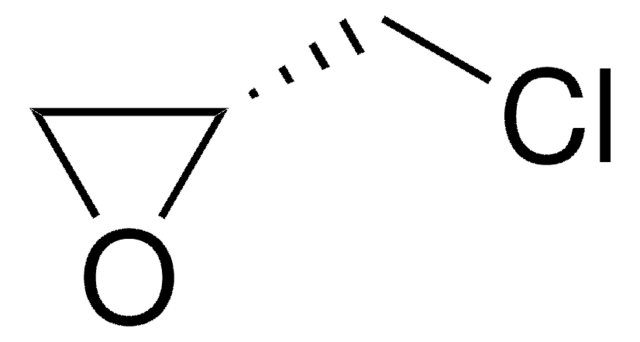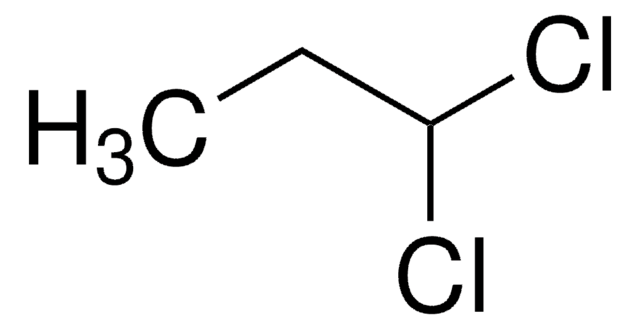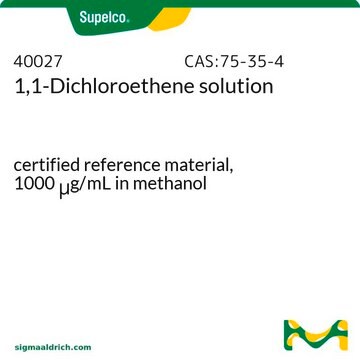40012
1,1-Dichloroethane solution
certified reference material, 5000 μg/mL in methanol
About This Item
Produtos recomendados
grau
certified reference material
TraceCERT®
Nível de qualidade
linha de produto
TraceCERT®
Certificado de análise (CofA)
current certificate can be downloaded
embalagem
ampule of 1 mL
concentração
5000 μg/mL in methanol
técnica(s)
HPLC: suitable
gas chromatography (GC): suitable
aplicação(ões)
environmental
formato
single component solution
temperatura de armazenamento
2-8°C
InChI
1S/C2H4Cl2/c1-2(3)4/h2H,1H3
chave InChI
SCYULBFZEHDVBN-UHFFFAOYSA-N
Procurando produtos similares? Visita Guia de comparação de produtos
Aplicação
Outras notas
Informações legais
Palavra indicadora
Danger
Frases de perigo
Declarações de precaução
Classificações de perigo
Acute Tox. 3 Dermal - Acute Tox. 3 Inhalation - Acute Tox. 3 Oral - Flam. Liq. 2 - STOT SE 1
Órgãos-alvo
Eyes
Código de classe de armazenamento
3 - Flammable liquids
Classe de risco de água (WGK)
WGK 2
Ponto de fulgor (°F)
51.8 °F - closed cup
Ponto de fulgor (°C)
11 °C - closed cup
Equipamento de proteção individual
Eyeshields, Faceshields, Gloves
Choose from one of the most recent versions:
Já possui este produto?
Encontre a documentação dos produtos que você adquiriu recentemente na biblioteca de documentos.
Nossa equipe de cientistas tem experiência em todas as áreas de pesquisa, incluindo Life Sciences, ciência de materiais, síntese química, cromatografia, química analítica e muitas outras.
Entre em contato com a assistência técnica









